A secret stash of 125-year-old bricks at IMS tells hallowed story of an iconic race track
INDIANAPOLIS -- Inside a shrouded storage room at Indianapolis Motor Speedway that only a few, trusted people have the key to is a secret stash of 125-year-old bricks stacked in an old wooden bin.
The room is filled mostly with mundane items -- boxes of trash bags, paper towel dispensers, heavy-duty liners and a rolled up red carpet ready to be unfurled for the celebrities who come to the track in May.
But there are also the bricks. All those bricks. And that's why this location must remain unknown.
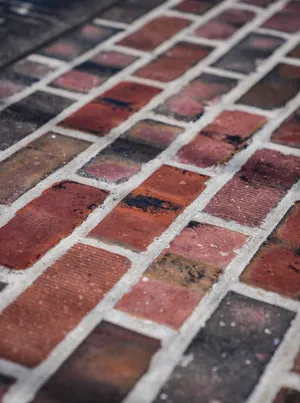
The bricks in this room are the hallowed remnants from a racing era long gone. They are some of the 3.2 million bricks that were brought to the speedway in 1909 to resurface the original track made of crushed limestone and tar. The track renovation came one month after a dark day at the speedway that ended in mangled bodies, crushed cars and death.
These bricks saved the Indianapolis Motor Speedway.
Bricks would be safer, the automobile racing experts decided. These bricks would be the savior of a fledgling sport in a city that would ultimately become the racing capital of the world. And for the next 50 years, the cars at IMS raced on a brick, or partially brick, surface.
More than a century after those bricks were installed in 1909, and later covered by asphalt, all that remains to the public eye of those 4x4x9-inch pavers is the iconic Yard of Bricks.
The stretch at the start-finish line of IMS where winners kneel down to kiss the mason with a wreath of flowers around their neck, reveling in victory, sometimes dripping tears onto the caulk, is made up of 576 bricks that are three feet wide and span 50 feet across.
Through the years, those bricks have chipped, cracked, broken and needed to be replaced. But every single one of the bricks that shine on the track have always been originals from that load of 3.2 million that arrived by railway back in 1909.
Thus, the importance of those bricks tucked away in a storage room, awaiting their turn to be pulled out and used as replacements for the historic Yard of Bricks at IMS.
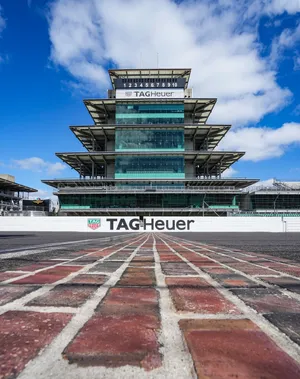
On a late evening in April, after being sworn to secrecy, IndyStar was granted access into that storage room where IMS keeps a secret stash of bricks.
"It's pretty unassuming," Suzi Elliott, senior manager of media relations, said as she opened the door to reveal a modest and bit disheveled space. "It's not like a golden vault or anything."
Of course, it's not a golden vault, nor should it be. No one wants to call attention to the bricks, some of which have been dug up and excavated from beneath the track's surface and others that were extras from the original installation.
A beloved Hoosier tradition, 'stolen'?Why authors of 'Back Home Again' were accused of stealing from another iconic Indiana song
IMS officials want to protect them. They want them here for decades to come so that the Yard of Bricks will always have a supply of replacements from 1909.
"I know they're just bricks," IMS president Doug Boles said. "But they're kind of special bricks. They are a literal, real, tangible piece of history from the very beginning of this place."
And so, because of that, it must always remain a secret where those bricks are stored.
'It was a bad day at Indianapolis Motor Speedway'
When Carl Fisher built the Indianapolis Motor Speedway in 1909, he searched and researched for the right track surface. The first surface had nothing to do with bricks.
The original IMS track was built with a two-inch layer of creek gravel, then two inches of crushed limestone topped by a coating of taroid (a solution of tar and oil). Next, a half-inch coating of crushed stone chips were worked in by heavy rollers to merge in between larger-sized stones, according to longtime track historian Donald Davidson on IMS.com.
"After a second heavier coating of taroid, a top dressing of stone dust was worked into the surface by six-ton rollers," he said.
It was supposed to be a gourmet track recipe. And, as the finishing touches were put on the speedway in the summer of 1909, Fisher directed hundreds of workers -- two shifts of men toiling around the clock using 100 Prest-O-Lite tanks with special burners to light up the night sky.

On Aug. 14, 1909, IMS' first race was run, the Federation of American Motorcyclists meet, which attracted the likes of local racer Erwin “Cannonball” Baker, Ed Lingenfelter, Jake De Rosier and Walter Davidson, of Harley-Davidson fame.
Most racers, up to then, had been competing on small board tracks and weren't used to such a large track with long straightaways and "monster curves," the Indianapolis Star reported at the time. "These racers were in uncharted territory."
The results were tragic.
As riders reached maximum speeds, the track surface began to break up, leaving rock and debris in their wake that pelted the racers behind them. In a later race, track conditions seemed to worsen as De Rosier crashed on the crushed stone surface. His wounds were filled with the tar used to seal the track, but he suffered internal bleeding.
The motorcycle races that were scheduled for the following Monday were canceled. But no one knew the horror that was about to happen at IMS when the cars took to the track.
Scandal fallout:'Proper investigation' led to 4 IndyCar team suspensions including Indy 500, Roger Penske says
A series of 16 auto races that would culminate in a 300-mile race were on the schedule at IMS in August of 1909 and car manufacturers were "anxious to test their cars on the first ideal racecourse ever built in America," the Indianapolis News reported.
The event drew the biggest names in racing at the time: Louis Chevrolet, Barney Oldfield, Johnny Aitken, Ray Harroun, Charlie Merz, Bob Burman, Ralph De Palma and Lewis Strang.
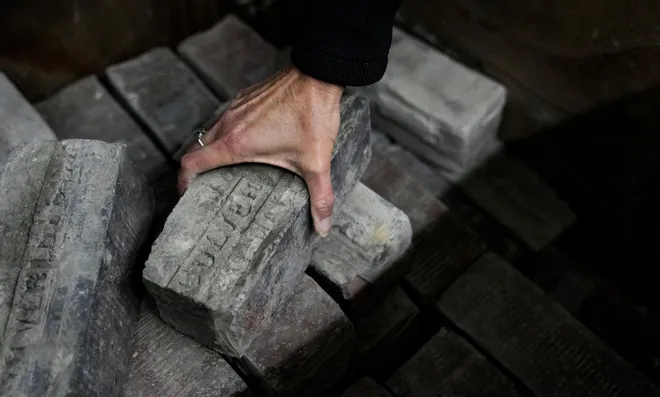
But on the first day, the subpar track conditions became all too real when Wilfred Bourque became the first driver to die in a racing accident at the speedway. Bourque and his mechanic, Harry Holcomb, were killed in the 250-mile race.
More than 300 workers quickly made repairs to the track by tamping down the surface. But on the final day of racing, which attracted 37,000 people, the main 300-mile race event was cut short by tragedy, it was a tragedy which Aitken seemed to see coming.
"Someone would surely get killed before long, because the track was being all torn to pieces,” Aitken told IndyStar after pulling out of the race at Mile 100. "It was hard to stay in the seat and the dust, at times, was so blinding that while whirling at such terrific speed, I couldn't tell who was in front or behind."
Goggles were cracked, knuckles were bloodied, and noses were broken from stones and debris thrown into the faces of the drivers who were temporarily blinded by the dust in their eyes, IndyStar reported.
And much worse happened when Merz blew out a tire on a curve, taking out a fence and trampling spectators. Merz flew through the air 100 feet before landing near a creek. His riding mechanic, Claude Kellum, was thrown from the car and killed. Spectators Homer Jollif and James West were also killed in the crash.
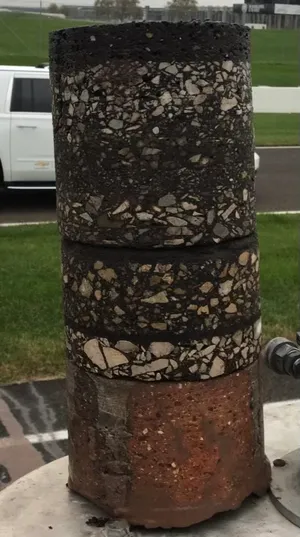
"It was just …” Boles said, pausing. "It was just a bad day at the Indianapolis Motor Speedway."
Track officials stopped the race, despite the crowd’s disappointment, IndyStar reported at the time. "They weren't there just to see racing — they were there to see the gory aftermath of crashes, even fighting to get a look at the mangled cars and bodies."
This was not what auto racing was supposed to be. The American Automobile Association, which sanctioned motorsports in those early days, gave IMS an ultimatum.
"They said, 'Look, we're not going to sanction anything at the Indianapolis Motor Speedway again unless you resurface the racetrack,'" said Boles. "So, Fisher went on this mission to figure out how he was going to resurface it and he had a choice really between concrete and brick.
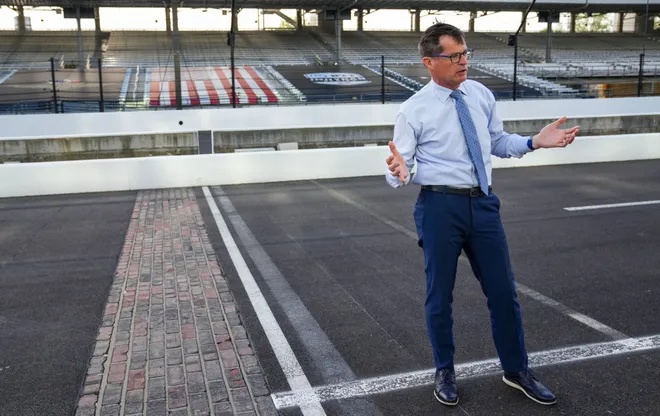
"And ultimately he chose brick."
'The Brickyard' is born
On Sept. 14, 1909, Fisher signed a contract with Wabash Clay Company in Veedersburg, Indiana, to install 3.2 million bricks on his speedway track. The bricks were placed on top of a two-inch layer of sand that was placed on top of the existing damaged surface.
Fisher paid $41,600 for the new track -- $13 per 1,000 bricks, according to Boles. Because Wabash Clay couldn't fulfill the request of 3.2 million bricks, it subcontracted to at least four other Indiana companies.
As the bricks arrived by train to IMS, the track's nickname was born.
"When they brought those bricks here, people would say, 'Oh, it's another load of bricks they're taking to the brickyard,'" Boles said. "And over 63 days in the fall of 1909, those bricks are laid here, and there's 3.2 million under the racetrack, and almost all of them are still under the racetrack today."
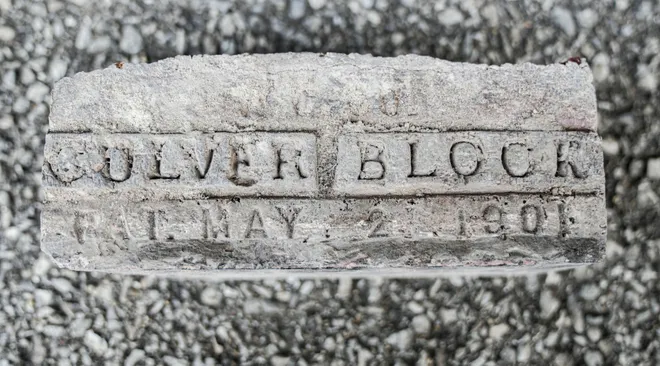
Except for those bricks that have been excavated during track resurfacings and that have been saved and stashed away in that secret location inside IMS.
Boles and other IMS officials estimate about 85% to 90% of the original bricks still lay beneath the track's surface, which in 1961 became entirely asphalt.
Except for the Yard of Bricks.
For the past 60 years, that Yard of Bricks has been one of the most written about, talked about, hallowed places in all of IMS, said Woody Woods, maintenance supervisor at the speedway, who has been in charge of caring for the bricks since 1996.
"The track's my baby," said Woods, 66, who will retire in May. "I take pride in making sure it's taken care of, not just for the drivers but for the fans, too."
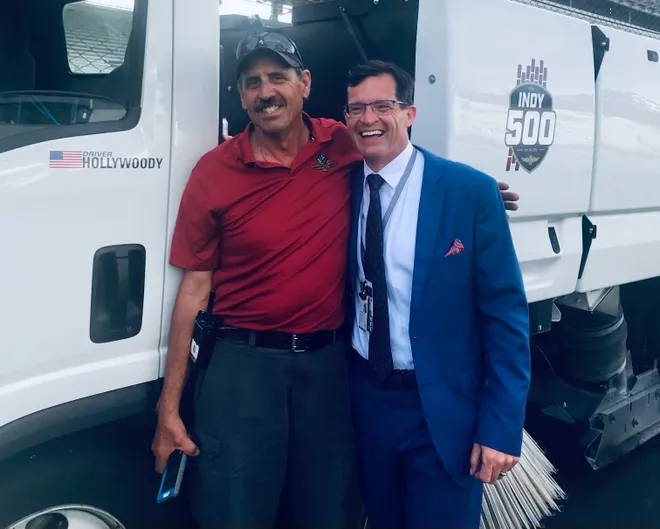
After every race or practice, it is Woods' job to inspect the Yard of Bricks, every single brick, to make sure there are no cracks or chips that might mean loose debris flying up as drivers cross the yard. It is his job to patch up one of motorsports' most legendary locations.
"I used to have to go out almost every night and do a caulking job," said Woods. It was part of his evening ritual before leaving IMS. But in 2023, IMS replaced the entire Yard of Bricks with "new" ones from 1909.
"It's all shiny and pretty now," said Woods.
'Scarcely credible to see my name engraved'
Four-time Indy 500 winner Helio Castroneves admits he sometimes has to take a moment to gather himself and soak in what all of this means. Castroneves happens to be one of four IndyCar drivers to have his named etched on the Yard of Bricks.
"It’s beyond belief," Castroneves told IndyStar, "scarcely credible to see my name engraved in this place that one day, this track, it's going to be the coliseum of racing."
Castroneves is among just five special bricks on the Yard of Bricks at IMS. One of those dates back to Dec. 17, 1909, the day when IMS workers finished laying a brick track after the horror and death that had occurred.
On that day, Fisher and Indiana Gov. Thomas Marshall placed a gold brick in the middle of the start-finish line to symbolize that the track was finished, renewed and ready for racing. Through the years, that gold brick disappeared, said Boles.
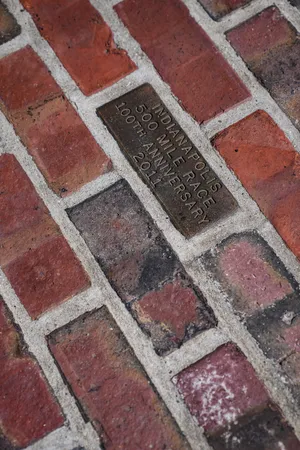
In 1961, IMS' Tony Hulman and Ray Harroun, who won the 1911 race, placed a brick in that center spot to honor the 50th anniversary of the Indianapolis 500. For the 100th anniversary of the race in 2011, A.J. Foyt and Mari Hulman George put a brick at the center of the Yard of Bricks to commemorate 100 years of the race.
Good for business:Indy 500 weekend prompts surge prices and sold-out hotels and Airbnbs
In addition to Castroneves, other four-time Indy 500 winners A.J. Foyt, Al Unser, Sr. and Rick Mears have their names etched into the Yard of Bricks.
That's five very special bricks. But really, Castroneves says, those bricks are no more special than the 3.2 million bricks brought onto the track in 1909.
And they are definitely no more special than those bricks stashed away in a bin at a secret storage location waiting for 125 years for their moment on the Yard of Bricks.
Follow IndyStar sports reporter Dana Benbow on X: @DanaBenbow. Reach her via email: dbenbow@indystar.com.
Disclaimer: The copyright of this article belongs to the original author. Reposting this article is solely for the purpose of information dissemination and does not constitute any investment advice. If there is any infringement, please contact us immediately. We will make corrections or deletions as necessary. Thank you.







